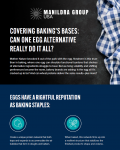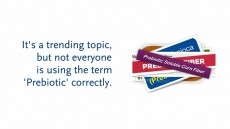World's processed cereals should all be fortified, expert
be fortified with iron, says the senior nutritionist of a US-based
non-profit health organisation.
Writing in this week's edition of The Lancet , Dr Ted Greiner from the international non-profit health organisation PATH, Washington DC, was responding to new research in the same journal that showed that sodium iron EDTA (NaFeEDTA) to be much more effective in raising iron levels than electrolytic iron, despite the electrolytic form being the most frequently used iron supplement in flour.
"In today's Lancet, Pauline Andang'o and colleagues show that iron deficiency, the most prevalent nutrient deficiency in the world, can be reduced by addition of iron to maize," wrote Greiner.
"These findings turn the tide: it is time to fortify the world's processed cereals."
Iron deficiency remains the leading nutrient deficiency in both developed as well as developing countries.
It affects around one in five women in the UK.
Many women are encouraged to take supplements but research suggests that these are not always very effective as the body has trouble taking up the form of iron provided.
Fortifying foods with iron also poses several challenges for the food industry, most notably with regards to effects on colour, taste, and the shelf-life of the food.
The new research, by scientists from the Centre for Public Health Research, Nairobi, and Wageningen University, Akzo Nobel, Unilever, and the Meander Medical Centre in the Netherlands, looked at the effects of fortifying porridge with either high-dose NaFeEDTA (56mg/kg), low-dose NaFeEDTA (28mg/kg) or electrolytic iron (56mg/kg) on the incidence of anaemia, iron-deficiency anaemia and general iron deficiency 516 children in Kenya.
The researchers found that, compared to the placebo group, the prevalence of iron-deficiency anaemia dropped by 89 per cent for the high-dose NaFeEDTA group, and by 48 per cent for the low-dose NaFeEDTA group.
No reduction in any iron status marker was observed in the electrolytic iron group.
High-dose NaFeEDTA fortified flour also improved three major iron status indicators in the children taking flour fortified with it - haemoglobin and plasma ferritin concentrations, and amounts of plasma soluble transferrin receptor.
Low-dose NaFeEDTA also improved these iron status indicators but to a lesser extent.
Electrolytic iron had little effect on these indicators, state the researchers.
The researchers suggest that the EDTA enhances absorption by preventing the iron and cereal binding, which would normally prevent the iron being absorbed in the intestines.
The authors caution that more work must be done to determine the safe dosage of EDTA - which can in theory induce zinc deficiency, although there is some evidence it can actually improve the absorption of dietary zinc.
"With continuous iron interventions, iron stores increase rapidly and after two to three years reach plateau values that depend on the absorbable iron that is supplied.
Thus we think that continued intervention beyond five months would eventually have led to an even greater discrepancy between the treatment effects associated with NaFeEDTA and electrolytic iron," concluded the researchers.
Commenting on the research, Greiner said that Andang'o's findings were unique since the study used whole-maize flour, which has high phytate contents which can significantly restrict the absorption of iron.
"At least one of the sponsors of Andang'o and colleagues' study stands to gain from any finding that NaFeEDTA is not harmful," wrote Greiner.
"Edetic acid is widely regarded as safe, and I can find little evidence for concern about its use.
However, Andang'o and colleagues rightly point out that continued watchfulness is called for, especially when young children are exposed to doses above the acceptable daily intake."
"Governments that mandate fortification will, if they develop capacity for assessment and monitoring, be able to ensure that the right nutrients are added to and maintained in key foods.
Food fortification is one of the most sustainable and cost-effective methods available to improve public health," he concluded.
Source: The Lancet 26 May 2007, Volume 369, Pages 1799-1806 "Efficacy of iron-fortified whole maize flour on iron status of schoolchildren in Kenya: a randomised controlled trial" Authors: P.E.A. Andang'o, S.J.M. Osendarp, R. Ayah, C.E. West, D.L. Mwaniki, C.A. De Wolf, R. Kraaijenhagen, F.J. Kok, and H Verhoef Comment: The Lancet 26 May 2007, Volume 369, Pages 1799-1806 "Fortification of processed cereals should be mandatory" Author: T. Greiner














